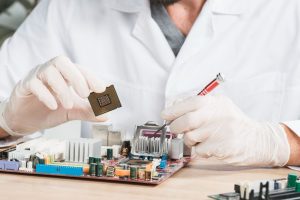
Common PCB Failures in Automation Systems and How to Fix Them
In modern factories, automation systems keep everything running smoothly. From robotic arms on assembly lines to sensors monitoring production, these systems rely on Printed Circuit Boards (PCBs). PCBs are like the brains of the equipment , small boards with tiny components that control signals, power, and data.
But PCBs can fail, causing machines to stop, production delays, and costly downtime. In industrial settings, common issues come from heat, dust, vibrations, power surges, and wear over time. The good news? Most PCB problems are fixable if you spot them early.
What Are PCB Failures?
A PCB failure occurs when a circuit board stops functioning correctly. This can happen due to physical damage, electrical issues, or environmental factors. In automation systems, PCB failures can lead to problems like motor malfunction, sensor errors, or complete system shutdown. Identifying the type of failure is the first step toward effective repair.
Common PCB Failures in Automation Systems
1. Overheating
One of the most common PCB problems in automation systems is overheating. Excessive heat can damage components such as resistors, capacitors, and microchips. Over time, this can cause the PCB to fail completely.
How to fix:
- Check for proper ventilation in the automation system.
- Replace damaged components.
- Use heat sinks or cooling fans to prevent future overheating.
2. Short Circuits
Short circuits happen when the current flows along an unintended path. This can cause sparks, smoke, or permanent damage to the PCB. Short circuits are often caused by soldering mistakes, broken insulation, or conductive debris on the board.
How to fix:
- Inspect the PCB carefully for visible shorts.
- Remove any debris or foreign material.
- Re-solder connections using proper techniques.
- Consider using protective coatings to prevent moisture-induced shorts.
3. Broken or Loose Connections
Loose or broken solder joints are frequent issues in automation PCBs. Vibrations from machinery or improper handling can cause these connections to fail. Symptoms include intermittent operation or sudden device shutdowns.
How to fix:
- Identify loose connections by visual inspection or testing with a multimeter.
- Re-solder broken joints carefully.
- Ensure that components are securely mounted on the board.
4. Component Failure
Components like capacitors, resistors, and ICs have a limited lifespan. Continuous operation in automation systems can lead to component degradation. Failing components can disrupt the entire PCB functionality.
How to fix:
- Test each component using diagnostic tools.
- Replace faulty parts with compatible replacements.
- Regularly maintain and check components to prevent unexpected failures.
5. Moisture and Corrosion Damage
Moisture can seep into PCBs, especially in environments with high humidity. This can lead to corrosion of metal traces and connectors, ultimately causing failure.
How to fix:
- Keep PCBs in dry, controlled environments.
- Use conformal coatings to protect against moisture.
- Clean corroded areas using specialized PCB cleaning solutions.
6. Electrostatic Discharge (ESD)
ESD occurs when static electricity damages sensitive PCB components. Even a small discharge can cause microchips to fail, leading to partial or complete PCB malfunction.
How to fix:
- Use ESD protection tools when handling PCBs.
- Replace damaged components.
- Implement grounding practices in automation systems.
Quick Troubleshooting Steps for Any PCB Issue
- Visual check — Look for burns, cracks, or loose parts.
- Power off and clean — Remove dust safely.
- Test power — Use multimeter.
- Compare with a working board if you have one.
- Isolate the problem — Disconnect modules one by one.
- Get help if needed — Some repairs need experts with X-ray or advanced tools.
Prevention is Cheaper Than Repair
- Do regular maintenance (cleaning, checks).
- Use high quality, industrial grade PCBs.
- Install surge protection and good cooling.
- Train staff on safe handling.
Fixing PCB failures quickly keeps your automation line running. Most issues are simple once you know what to look for. With basic tools and care, even small teams can handle many repairs in house.
Why FMG Electronics Stands Out
FMG Electronics stands out for its decades of industry experience, strong technical support, and reliable supply of quality components. With close relationships with top manufacturers, ISO certified processes, and a customer focused approach, FMG ensures fast delivery, design assistance, and environmentally compliant solutions, making it a trusted partner for engineers and businesses in automation, embedded systems, and electronics projects.

